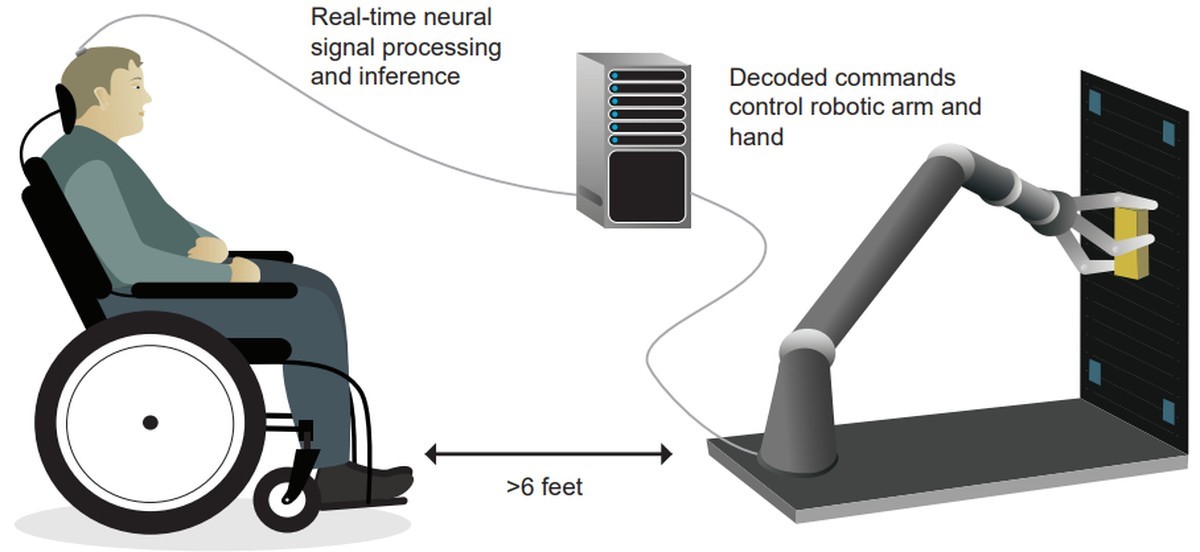Indian Scientist Helps Build Brain-Controlled Robotic Arm
Indian Scientist Helps Build Brain-Controlled Robotic Arm
Why in News ?
Indian-origin neuroscientist Nikhilesh Natraj co-led a team at UCSF that developed a brain-computer interface (BCI) enabling a paralysed man to control a robotic arm using only thoughts, marking a breakthrough in assistive neurotechnology and AI integration.
Breakthrough in Brain-Computer Interface (BCI):
- The BCI system allows a paralysed stroke patient to control a robotic arm using mental imagery.
- Developed at the Weill Institute for Neurosciences, UCSF, led by Nikhilesh Natraj, originally from Chennai.
- The patient used the robotic arm for 7 months with minimal recalibration.
- The study was published in the peer-reviewed journal Cell.
- The BCI uses implanted sensors to read signals from the brain’s movement regions without sending any electrical pulses back.
How the System Works
- The participant imagined moving fingers or hands, and brain activity was recorded through implanted sensors.
- A machine learning algorithm detected daily shifts in neural patterns, enhancing stability.
- The data was analysed in a high-dimensional space, tracking pattern shifts across sessions.
- These signals were decoded to operate a virtual robot arm and later a real robotic arm.
- Tasks included opening a cabinet, retrieving a cup, and using a water dispenser — simple yet life-enhancing actions.
Future Potential and Challenges
- The system shows promise for real-world use by paralysis patients.
- Natraj emphasized the need for further work to make it adaptable to complex environments like crowded public spaces.
- The goal is to refine the tech for wider deployment, enabling independence and dignity for those living with severe mobility impairments.
- The research combines neuroscience, AI, and assistive robotics, reflecting India’s growing contribution to global innovation.
About Brain-Computer Interface (BCI):Meaning●A computer-based system that captures and interprets brain signals from the Central Nervous System (CNS). Components● Signal Acquisition – Measures and digitizes brain signals. Applications● Medical – Stroke rehab, diagnosis, and prevention. |





